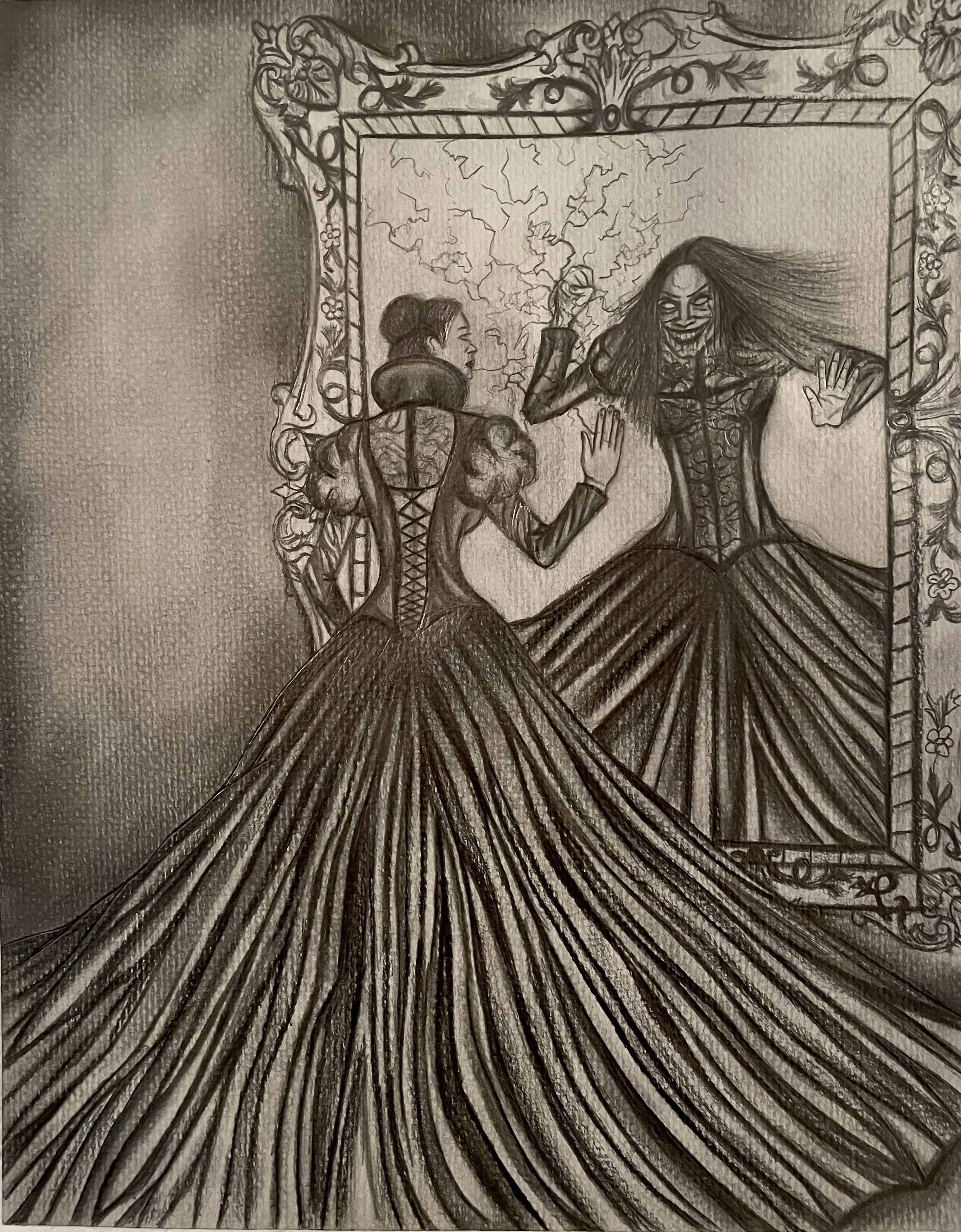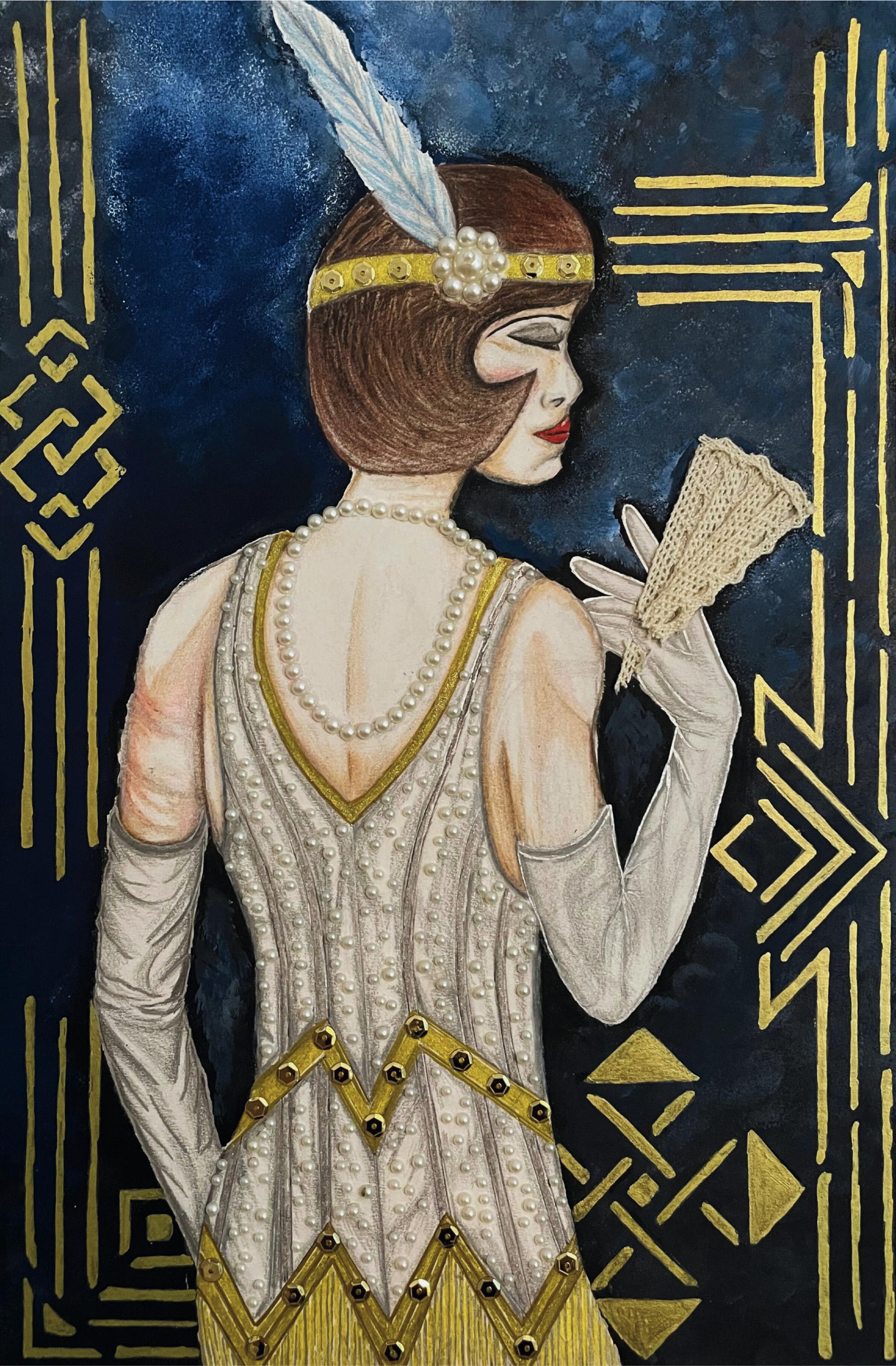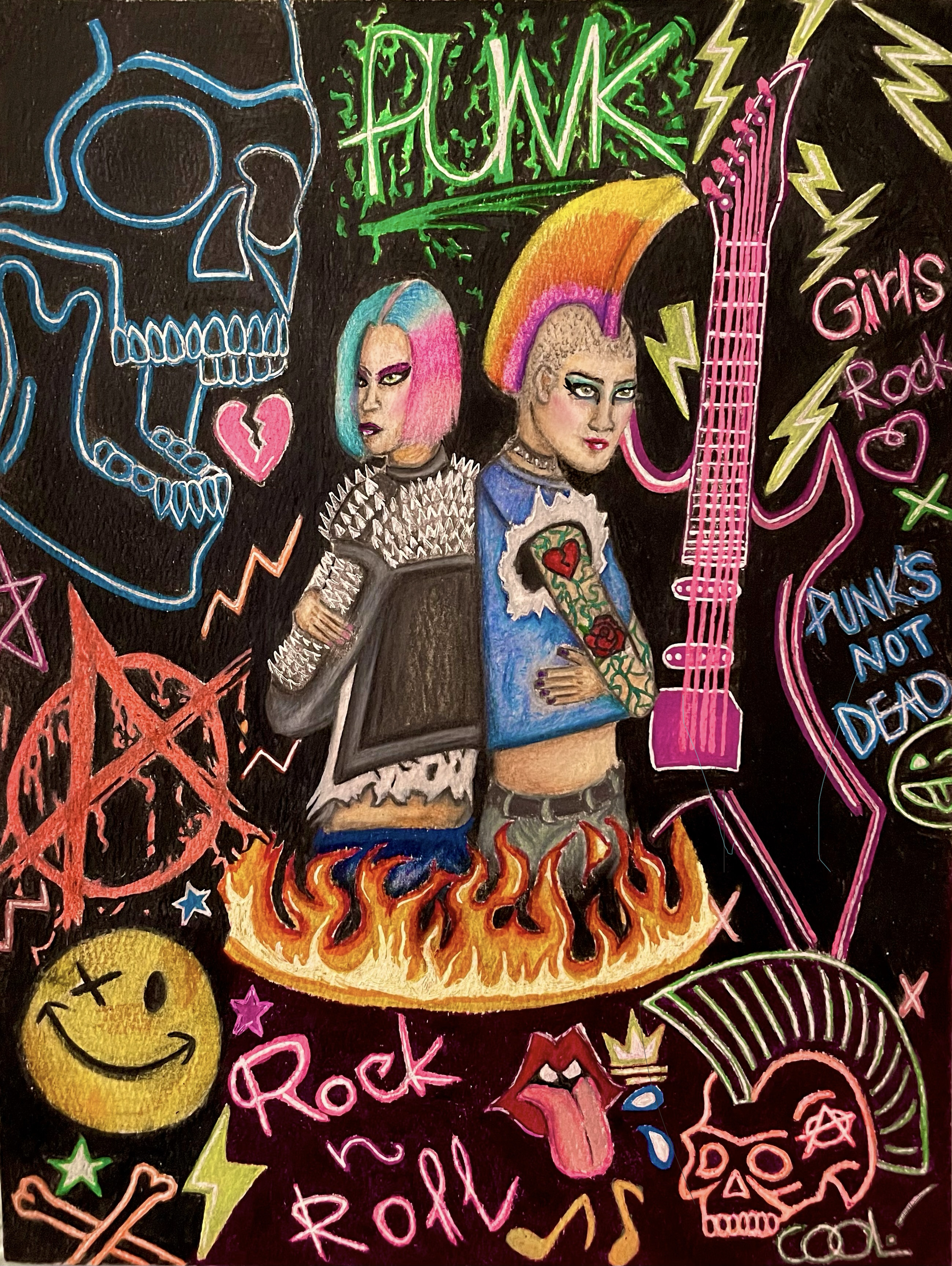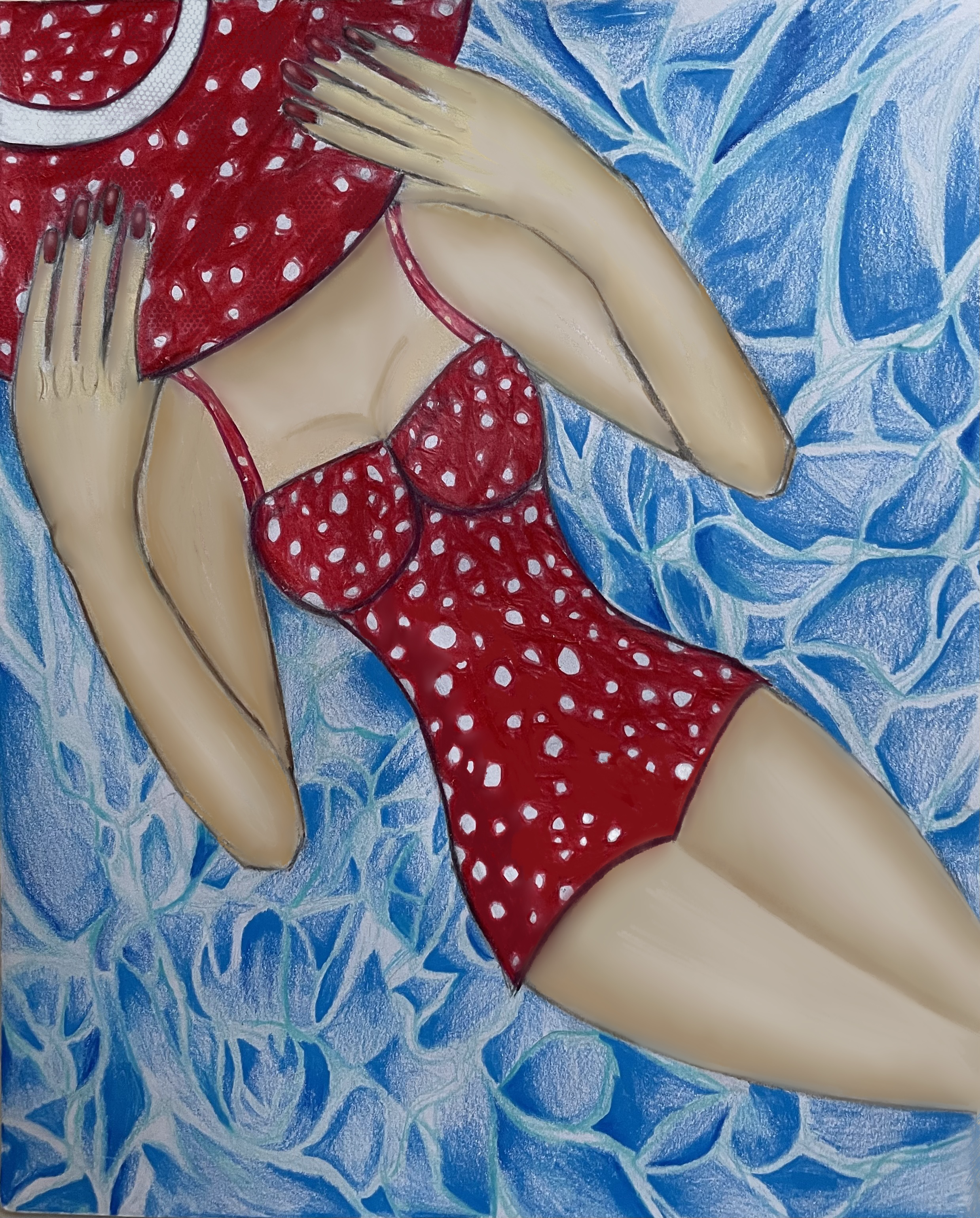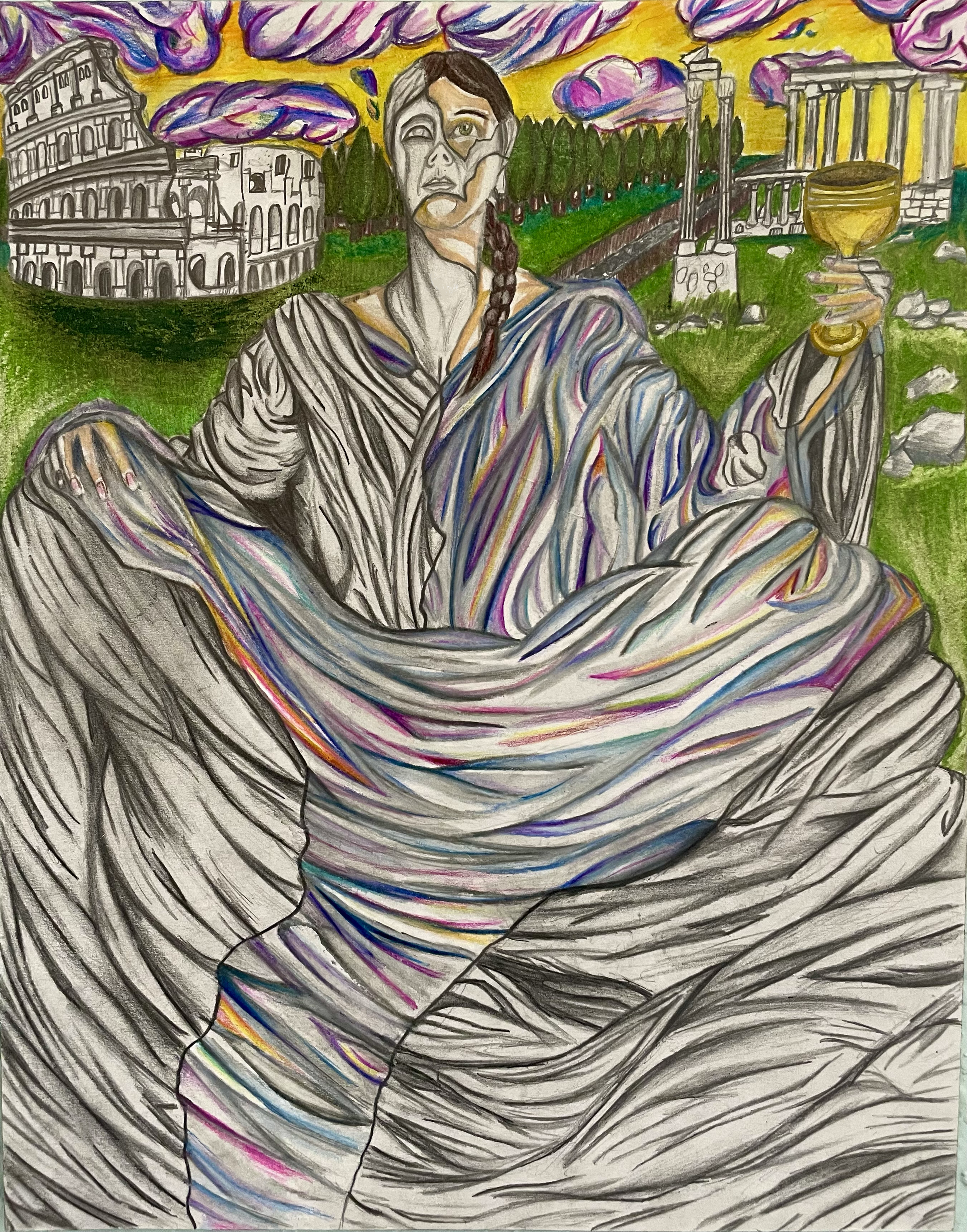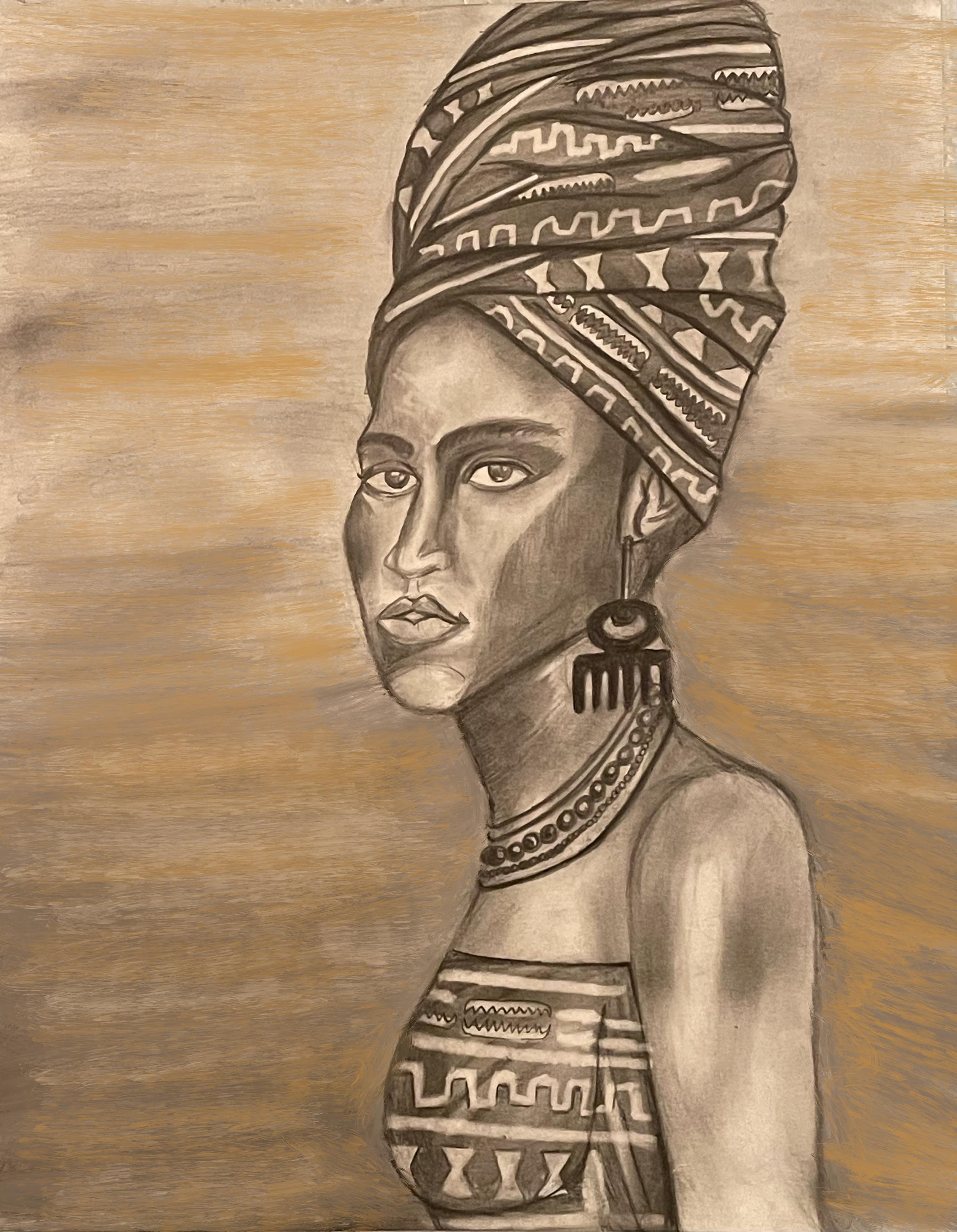
AP 2D Art & Design
How Can I Illustrate How Femininity In Dress is Defined Throughout Time?
I have a true passion for costume design. My visual depictions explore women and their representation across time and cultures. I examine through my artwork how femininity in dress is expressed through changing ideals and societal expectations. I use symbolism, surrealism, style, and historical references to convey how dress reflects identity, societal roles, femininity, suppression, and empowerment across multiple cultures and time periods.
PiecesThis piece captures the balance between power and grace by blending Japanese culture with traditional dress. I used graphite to portray the samurai and also for the architecture to convey history, strength, and resilience. In contrast, I used vibrant color to bring life into the kimono and Sakura blossoms. to highlight femininity, grace, and renewal. Color is used as a tool for storytelling to create emotional tension and harmony.
This piece was inspired by the Knights Templar and the imagery of medieval warfare. I used graphite to depict the commanding presence of the armor and contrasted it with the vibrant green and gold colors of the woman’s dress. She symbolizes innocence, fear, and vulnerability as she opposes power and violence. By contrasting the graphite of the armor with the vibrant color of the fabric of her dress, this piece powerfully shows how clothing, setting and symbolism can tell a story without ever using words.
This piece explores femininity through ancient Egyptian art and mythology. I placed Queen Nefertiti in the center to show her commanding presence and femininity. She is surrounded by powerful deities like Anubis and Horus. I used vivid color to emphasize her status against the background that mirror stone carvings and pyramids. The contrast highlights the power of a female god on Earth. History shapes meaningful and memorable stories that can be expressed visually.
A Victorian woman is confronting her distorted reflection, symbolizing her inner rage as a result of societal pressure and constraint. I was inspired by an 1875 mourning dress. I used dramatic values, historically accurate silhouettes to highlight her femininity as well as her constriction.
Inspired by Erté and the glamour of the 1920's, this mixed media portrait captures the elegance and bold femininity of the flapper through layered textures, pearl sequins and metallic linework. Like my costume designs, it blends fashion history with character expression, using materials to reflect both freedom and decadence.
I created clay roses out of foam clay to honor the Mexican culture and traditions of Dia De Los Muertos. Her vibrant Mexican dress contrasts the grayscale ancestor figures to exude not only personal pride but memory of her ancestors and the femininity and culture passed down.
This piece illustrates the rebellious spirit of the 1980's punk era through raw and edgy fashion, graffiti symbols, and bright neon color. Inspired by the underground culture of the time, I used clashing textures and eye-catching design choices to reflect on how punk completely rejection perfection and embraced identity through loud visual noise. It shows how clothing and style can transform into powerful acts of protest.
This vibrant drawing highlights the playful curving lines of a polka dot swimsuit to embody the ideal of 1950's femininity. With vintage swimsuit ads as inspiration, I focused on texture and movement to emphasize both the hourglass ideal and the flow of the water. This piece explores how fashion can shape identity through silhouette and reinforces cultural expectations of the time.
This portrait reimagines a Roman woman as both a statue and living figure as inspired by the seated pose of Livia Drusilla. I used graphite to capture the weight and elegance of marble and then added color in layers to the drapery to symbolize transformation of the past to the present . The blending of both old and new reveals how dress and historical settings can tell stories across centuries.
This portrait explores femininity through traditional African prints, adornment, and symbolism. I was inspired by the African Duafe symbol, which highlights feminine care and strength, I used graphite, charcoal, and digital dry brush texture to create depth and softness within the portrait. The patterns and textures in the head-wrap and dress highlight, how cultural dress can shape her identity.
This piece was inspired by Salvador Dali’s Spider of the Evening, It explores the concept of restriction and freedom through surreal dress. A melting corset slips from the figure, symbolizing a release from past constraints, while the flowing gown and vivid sunset represent liberation and renewal. I used color and distortion to reimagine the feminine form to capture freedom.
I wanted to capture the elegance of Indian femininity inspired by a photo of a family friend’s Indian wedding ceremony. I used graphite to intentionally flow like the sari she wears, while the vivid spice toned sky creates a contrast and burns like the henna rhythms and designs on her hand. The composition reflects how dress and cultural rituals can shape femininity, identity and grace.

Select Processes


